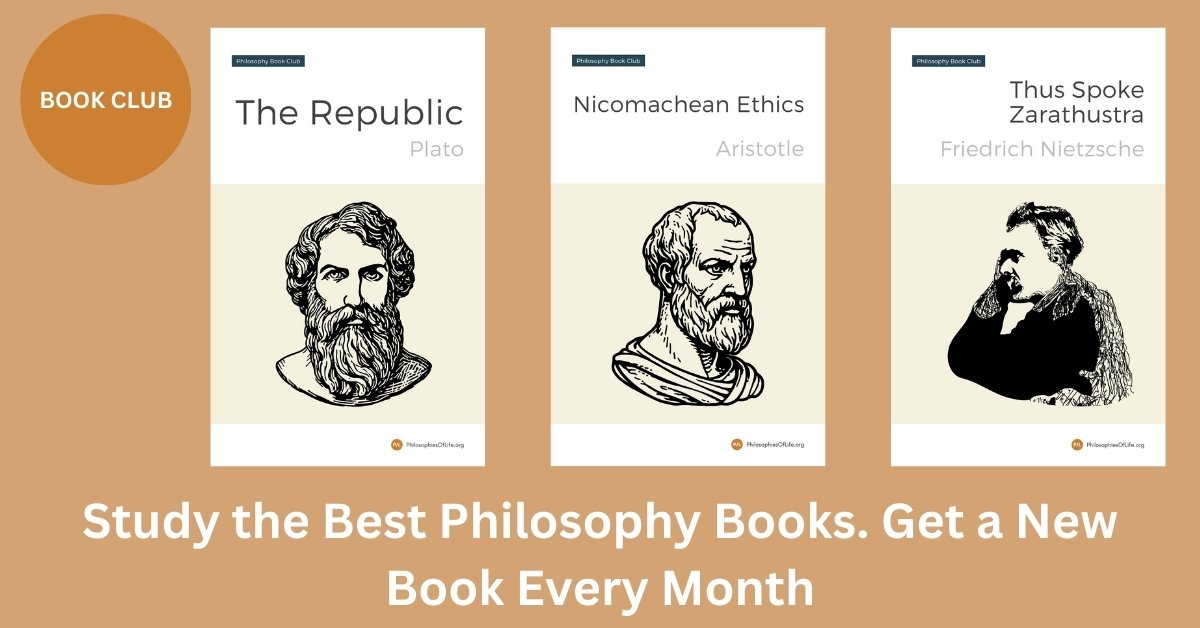Developing a personal philosophy of life often involves engaging with the ideas of great thinkers, yet some concepts may remain unclear despite their significance. One such concept is monadology, a critical element of Gottfried Wilhelm Leibniz’s philosophy. Understanding this idea is essential as it can profoundly influence how individuals shape their own philosophical perspectives. This article aims to explore the foundational aspects of Leibniz’s philosophy, the concept of monadology, and their importance in developing a coherent philosophy of life.
Key features of Gottfried Wilhelm Leibniz’s philosophy
Gottfried Wilhelm Leibniz was a German polymath and philosopher known for his contributions to metaphysics, logic, and mathematics. One of his key philosophical ideas is the concept of “monads.” Monads are basic, indivisible, and immaterial elements that make up reality. Leibniz believed that monads are not physical but instead represent metaphysical building blocks, each possessing its own purpose and perspective of the universe. He emphasized that monads do not interact physically but are pre-set by God to harmonize perfectly in what he called “pre-established harmony.”
Leibniz is also famous for his view that we live in “the best of all possible worlds.” He argued that God, being all-knowing and all-powerful, created a universe that balances good and evil in the most optimal way. While this idea was later criticized, particularly by the philosopher Voltaire, it remains central to Leibniz’s optimistic philosophy.
Furthermore, Leibniz contributed to the idea of universal reasoning and logic. He dreamed of creating a universal language or system of symbols that could be used to analyze and solve problems across disciplines. This vision inspired advancements in modern logic and computing. Leibniz’s work continues to influence many fields, blending science and philosophy in a way that seeks to uncover deeper truths about existence, knowledge, and reality.
What is monadology?
Gottfried Wilhelm Leibniz’s view on monadology is rooted in his belief that the universe is made up of fundamental, indivisible units called monads. According to him, monads are simple, immaterial substances that cannot be broken down further. Each monad is unique and acts as a basic building block of reality. They do not interact with each other physically but are instead programmed by a divine creator to exist in pre-established harmony. This means that all monads operate independently, yet their actions align perfectly to give rise to the appearance of a connected and ordered universe.
Leibniz believed that monads possess perception and an inner drive, which he referred to as appetition. These qualities allow monads to reflect the state of the universe in their own way. Higher-level monads, such as those associated with human beings, are capable of self-awareness and reasoning. Lower-level monads, on the other hand, exist without such complex perceptions.
Leibniz’s monadology presents a picture of reality as being made up of countless immaterial points of force, emphasizing a metaphysical explanation for the nature of existence. For him, the world is composed not of physical matter but of these invisible, dynamic entities working harmoniously under divine guidance. This philosophical framework highlights his attempt to unite science, metaphysics, and theology within a coherent system.
This example helps to demonstrate this philosophical perspective. Imagine a clock that keeps perfect time and never requires adjustment. Leibniz suggested that the universe is made up of countless “monads,” which are fundamental, indivisible, and self-contained units of reality. Each monad operates independently, yet somehow remains in harmony with all others, much like perfectly synchronized clocks. For instance, consider two individuals who live in completely different parts of the world yet wake up at the same moment, acting as if they are connected. According to Leibniz, this connection does not require any interaction between monads themselves; instead, their harmony is pre-established by a higher force, often perceived as divine. This synchronization of monads, though they never influence each other directly, creates the intricate and orderly universe we inhabit. Through this analogy, Leibniz showcased the elegant structure of existence rooted in harmony and interconnectedness.
Challenges to Gottfried Wilhelm Leibniz’s view about monadology
One of the main reasons some philosophers object to or reject Gottfried Wilhelm Leibniz’s ideas about monadology is his concept of pre-established harmony. Critics argue that this notion seems to eliminate the meaningful interaction between substances. According to pre-established harmony, each monad operates independently, with no direct cause-and-effect relationship between them. To some philosophers, this idea is counterintuitive because it contradicts the way we typically understand the world as being interconnected and influenced by physical interactions. The rejection stems from the belief that such a framework does not provide an adequate explanation for the dynamic and interactive nature we observe in the universe.
Another objection is rooted in the perceived difficulty of monadology to account for the complexity of the physical world. Leibniz claims that monads are indivisible, simple, and do not have physical extension, yet they form the foundation of all reality. For many philosophers, this abstraction detaches the concept of monads from the real-world phenomena they are supposed to explain. Critics argue that without any physical basis or interaction, monads become an overly speculative idea that lacks empirical support. This makes it difficult for some to accept monadology as a plausible explanation for the constitution of the world.
Philosophers also challenge the inherent metaphysical assumptions within monadology. For example, the idea that each monad reflects the entire universe in a unique way strikes many as overly idealistic or fantastical. It raises questions about how finite, simple entities could contain representations of the infinite complexity of the cosmos. These assumptions are seen as unverifiable and too far removed from observable reality, leading skeptics to dismiss monadology as more of a philosophical exercise than a convincing explanation of existence.
Finally, some critics object to the theological implications of Leibniz’s monadology. The idea of a pre-established harmony suggests that the universe operates perfectly under divine orchestration. While this aligns with Leibniz’s theistic beliefs, secular philosophers and others argue that this reliance on divine intervention makes monadology less compelling as a purely philosophical explanation. For these reasons and others, many philosophers find Leibniz’s monadology to be problematic, even if they acknowledge its creativity and influence on later thinkers.
Why monadology is important to Gottfried Wilhelm Leibniz’s philosophy
Understanding the concept of monadology is essential to gaining a deeper comprehension of Gottfried Wilhelm Leibniz’s philosophical framework.
- Understanding the Structure of Reality
Monadology provides a way to understand how the world is fundamentally composed. Rather than relying on physical atoms, it introduces the idea of simple, indivisible units or “monads” that form the basis of existence. These monads are not physical objects but metaphysical entities, which offer an alternative framework for thinking about the nature of the universe. This idea helps explain how complex systems can arise from fundamental building blocks without reducing the explanation to a purely material level.
- Connection Between the Individual and the Whole
The concept of monadology highlights the relationship between individual units and the larger system they belong to. Each monad is considered unique and reflects the universe in its way, suggesting that every part of reality is interconnected in some manner. This perspective is important for understanding how the diversity in the world aligns with an underlying unity, offering insight into how individuals fit into a broader cosmic order.
- Integration of Science and Philosophy
By introducing monadology, the philosophy bridges the gap between scientific inquiry and metaphysical speculation. Monads provide a way to think about the unseen forces and structures underlying physical phenomena, encouraging a deeper exploration of the principles shaping the universe. This approach is significant because it challenges the boundaries of knowledge and encourages collaboration between disciplines to understand existence comprehensively.
- Foundation for Discussions on Perception and Consciousness
Monadology also raises important points about perception and awareness. Each monad is said to reflect its own internal perspective on the universe, which can be used to explore ideas about consciousness and individual experience. This viewpoint fosters discussion about how beings perceive their realities and interact with the world, making it a meaningful concept for debates on the nature of consciousness.
Contrasting Gottfried Wilhelm Leibniz’s philosophy with Baruch Spinoza’s philosophy
Gottfried Wilhelm Leibniz’s concept of monadology offers a clear distinction from Baruch Spinoza’s philosophy, as the two thinkers had fundamentally different views about the nature of existence and individual entities. Spinoza believed in a single, unified substance he called “God or Nature,” meaning that everything in reality is part of one interconnected whole. For Spinoza, there is no true individuality, as all things are merely expressions or modes of this one eternal substance. His philosophy emphasizes unity and denies the existence of independent, self-contained entities.
Leibniz, on the other hand, proposed the idea of monads—indivisible, self-sufficient, and unique substances that make up the universe. Unlike Spinoza’s unified substance, each monad in Leibniz’s view is an independent reality, complete in itself while reflecting the entire cosmos in its own unique way. This perspective highlights the individuality and internal harmony of all entities, whereas Spinoza’s philosophy focuses on the interconnectedness of everything as a single, divine whole.
The key difference lies in their metaphysical frameworks. Spinoza sees reality as one unified system, with no room for separate individuals beyond their role as modes of the substance. Leibniz, in contrast, celebrates individual essence and the multiplicity of monads, offering a pluralistic view of the universe. These opposing ideas underline the philosophical divergence between the two thinkers.
Monadology, Gottfried Wilhelm Leibniz’s philosophy and the philosophy of life
Reflecting on Gottfried Wilhelm Leibniz’s ideas, including his view on monadology, can provide valuable insights as we develop our own philosophies of life, regardless of whether or not we ultimately agree with them. The practical importance of this reflection lies in how it challenges us to think deeply about the fundamental nature of existence, the interconnectedness of the world, and our place within it. When we engage with complex philosophical views like those of Leibniz, it prompts us to ask big questions about reality, individuality, and purpose—questions that are essential when forming a meaningful philosophy of life.
Examining Leibniz’s philosophy teaches us the value of considering different perspectives and thinking critically about abstract concepts. Philosophical reflection requires effort and can help us hone our reasoning skills while fostering intellectual curiosity. Even if we find aspects of Leibniz’s ideas difficult to agree with, questioning his arguments and exploring alternatives encourages us to refine our own beliefs. This process helps us clarify what we value most and strengthens our ability to articulate and defend our views, both of which are crucial for personal growth.
Furthermore, reflecting on historical philosophies like Leibniz’s invites us to engage with timeless debates about topics such as individuality, spirituality, and the nature of reality. These are not just theoretical concepts—they influence how we approach our day-to-day lives. For instance, thinking about interconnectedness can inspire us to treat others with empathy, recognizing how our actions may impact the larger whole. Considering the deeper nature of existence can also prompt us to align our choices with a sense of purpose or ethical responsibility.
Lastly, reflecting on philosophical ideas, even those we may disagree with, is a practice in open-mindedness and intellectual humility. It helps us understand that the world is rich with diverse perspectives, some of which may challenge our own but nonetheless contribute to the broader conversation about life and meaning. By learning from thinkers like Leibniz and applying that learning to our own lives, we develop a philosophy that is both informed and authentic, one that resonates with our personal experiences and aspirations. This reflective practice ultimately guides us towards living with intention and understanding.
Further reading
Garber, D. (2009). Leibniz: Body, substance, monad. Oxford University Press.
Ishiguro, H. (1990). Leibniz’s philosophy of logic and language. Cambridge University Press.
Jolley, N. (Ed.). (1995). The Cambridge companion to Leibniz. Cambridge University Press.
Leibniz, G. W. (1989). Philosophical essays (R. Ariew & D. Garber, Trans.). Hackett Publishing Company.
Leibniz, G. W. (1991). Monadology and other philosophical essays (P. Schrecker & A. M. Schrecker, Trans.). Macmillan Publishing.
Mercer, C. (2001). Leibniz’s metaphysics: Its origins and development. Cambridge University Press.
Russell, B. (1992). A critical exposition of the philosophy of Leibniz. Routledge.


